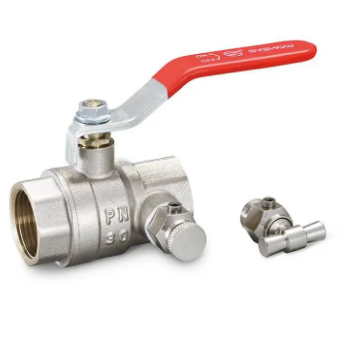1. Leakage of valve body:
Reasons: 1. The valve body has blisters or cracks; 2. The valve body is cracked during repair welding
Treatment: 1. Polish the suspected cracks and etch them with 4% nitric acid solution. If cracks are found, they can be revealed; 2. Excavate and repair the cracks.
2. The valve stem and its mating female thread are damaged or the stem head is broken or the BALL VALVES stem is bent:
 Reasons: 1. Improper operation, excessive force on the switch, failure of the limit device, and failure of the over-torque protection. ; 2. Thread fit is too loose or too tight; 3. Too many operations and long service life
Reasons: 1. Improper operation, excessive force on the switch, failure of the limit device, and failure of the over-torque protection. ; 2. Thread fit is too loose or too tight; 3. Too many operations and long service life
Treatment: 1. Improve the operation, the unavailable force is too large; check the limit device, check the over-torque protection device; 2. Choose the right material, and the assembly tolerance meets the requirements; 3. Replace the spare parts
Third, the bonnet joint surface leaks
Reasons: 1. Insufficient bolt tightening force or deviation; 2. The gasket does not meet the requirements or the gasket is damaged; 3. The joint surface is defective
Treatment: 1. Tighten the bolts or make the gap of the door cover flange the same; 2. Replace the gasket; 3. Disassemble and repair the sealing surface of the door cover
Fourth, the valve internal leakage:
Reasons: 1. The closing is not tight; 2. The joint surface is damaged; 3. The gap between the valve core and the valve stem is too large, causing the valve core to sag or contact poorly; 4. The sealing material is poor or the valve core is jammed.
Treatment: 1. Improve operation, reopen or close; 2. Disassemble the valve, re-grind the sealing surface of the valve core and valve seat; 3. Adjust the gap between the valve core and the valve stem or replace the valve disc; 4. Disassemble the valve to eliminate jams; 5. Re-replace or surfacing seal ring
5. The valve core is separated from the valve stem, causing the switch to fail:
Reasons: 1. Improper repair; 2. Corrosion at the junction of the valve core and valve stem; 3. Excessive switch force, causing damage to the junction between the valve core and valve stem; 4. The valve core check gasket is loose and the connection part Wear
Treatment: 1. Pay attention to inspection during maintenance; 2. Replace the door rod of corrosion-resistant material; 3. Do not open the valve forcefully, or continue to open the valve after the operation is not fully opened; 4. Check and replace damaged spare parts
Six, there are cracks in the valve core and valve seat:
Reasons: 1. Poor surfacing quality of the bonding surface; 2. Large temperature difference between both sides of the valve
Treatment: repair the cracks, heat treatment, car polish, and grind according to the regulations.
Seven, the valve stem does not work well or the switch does not move:
Reasons: 1. It is closed too tightly in the cold state, and it expands to death after being heated or is too tight after being fully opened; 2. The packing is too tight; 3. The valve stem gap is too small and it expands; 4. The valve stem has been matched with the nut Tight, or damage to the matching thread; 5. The packing gland is biased; 6. The door stem is bent; 7. The medium temperature is too high, the lubrication is poor, and the valve stem is severely corroded
Treatment: 1. After heating the valve body, try to open slowly or open fully and tightly and then close again; 2. Test open after loosening the packing gland; 3. Increase the valve stem gap appropriately; 4. Replace the valve stem and wire Female; 5. Readjust the packing gland bolts; 6. Straighten the door rod or replace it; 7. Use pure graphite powder as the lubricant for the door rod
Eight, packing leakage:
Reasons: 1. The packing material is incorrect; 2. The packing gland is not compressed or biased; 3. The method of installing the packing is wrong; 4. The surface of the valve stem is damaged
Treatment: 1. Select the packing correctly; 2. Check and adjust the packing gland to prevent pressure deviation; 3. Install the packing according to the correct method; 4. Repair or replace the valve stem
Post time: Dec-17-2021






